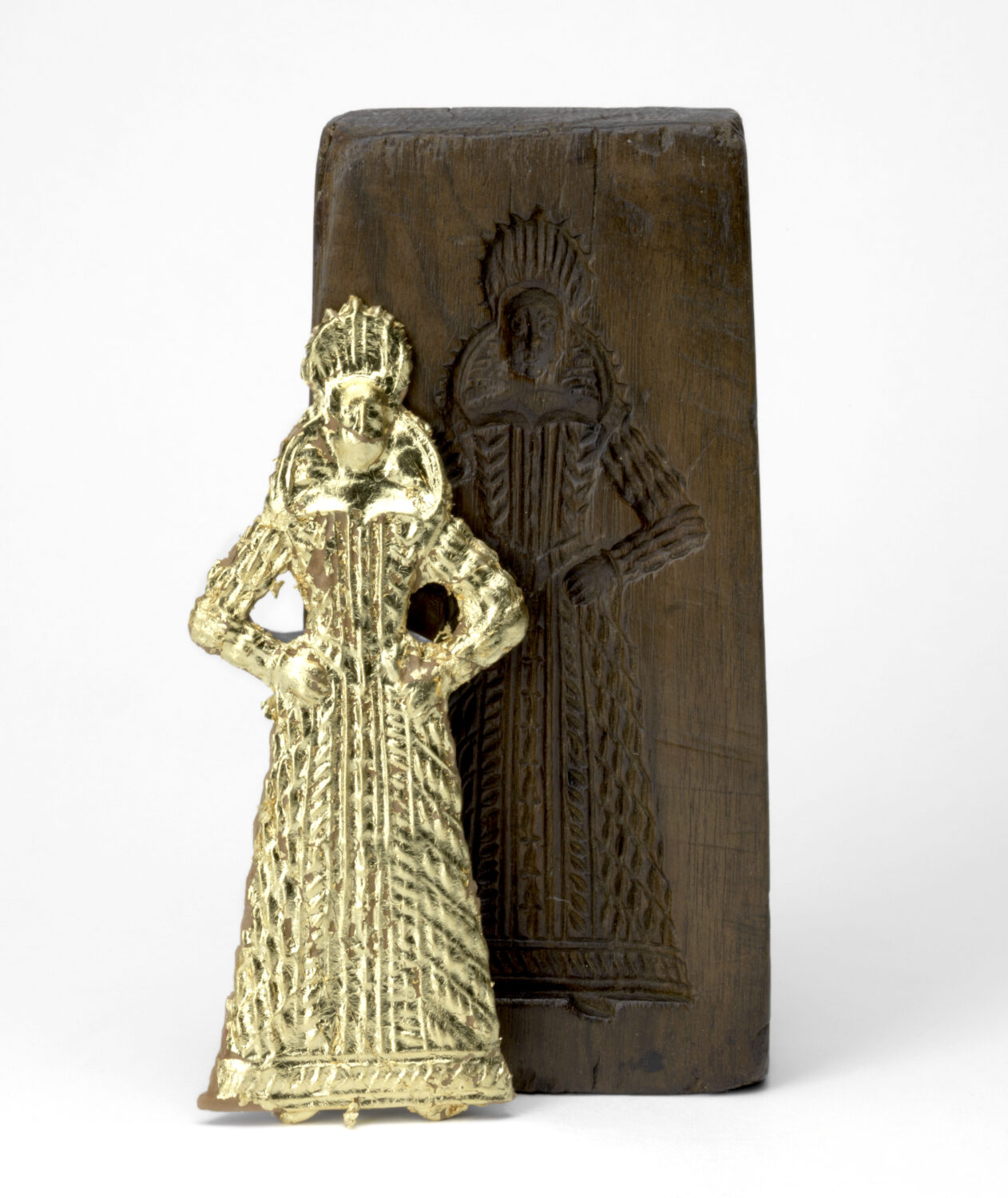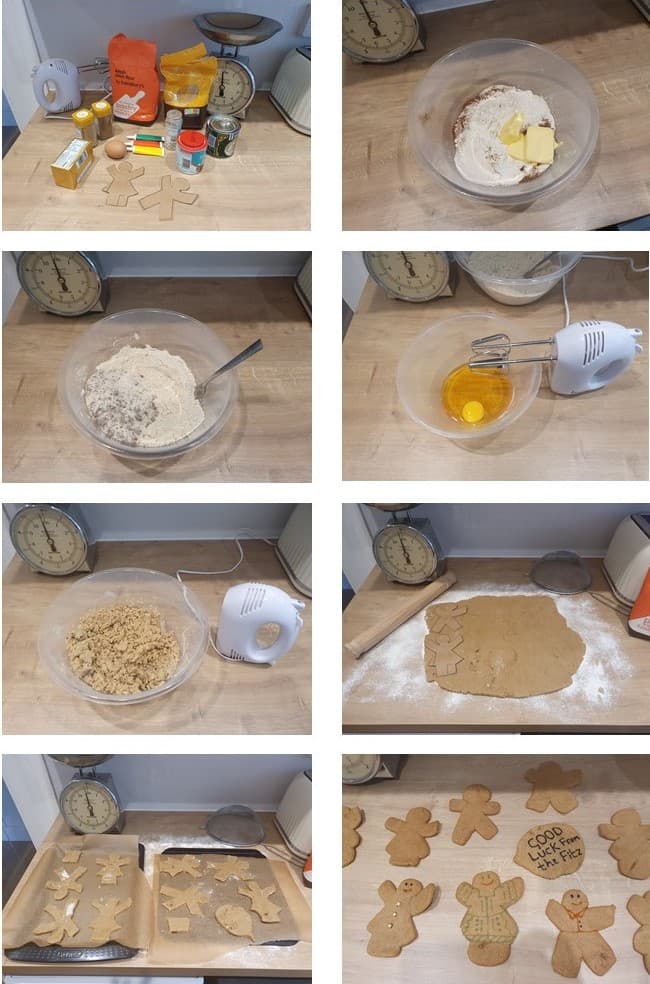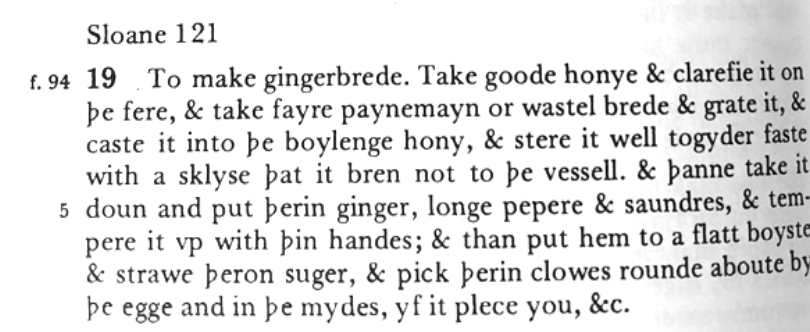Look and Think activities should take 5 -10 minutes.
Do activities might take longer depending on the task and how creative you are feeling!
MS 251, Folio 13r
Paris, France
Look
Look at how small and detailed the biscuit is!
What do you think the shiny material is that’s covering her?
Think
How many of these could you eat?
Imagine what special event this gingerbread woman was made for.
Have you ever eaten a sweet snack decorated with gold foil?
Do
Make your own gingerbread people following the recipe below.
Decorate them with historic clothing or try out a medieval recipe, also below.

Modern gingerbread recipe
You will need
- 350g plain flour
- 1 tsp bicarbonate of soda
- 2 tsp ginger
- 1 tsp cinnamon
- 125g butter
- 175g soft brown sugar
- 1 egg
- 4 tbsp golden syrup
- Biscuit cutter or stencil
Instructions
- Sieve the flour, bicarbonate of soda, ginger and cinnamon together.
- Add the butter and blend or mix until it looks like breadcrumbs. Stir in the sugar.
- Beat the egg and syrup together. Blend the two together until the mixture clumps.
- Knead the dough until smooth and then put in the fridge for 15 mins. Preheat oven to 180C/160C Fan/Gas 4 and line two baking trays with greaseproof paper.
- Roll the dough out on a floured surface until about 0.5cm thick. Cut around your stencils or use a cutter. Bake for 12-15 minutes or until golden. Leave to cool on the tray for at least 10 minutes.
- Decorate!

Early gingerbread recipes from food historian, Ivan Day, used during the medieval times.
- Boil honey until it is as thick as wax and crystallised. Put some water into another vessel and pour in the honey. Mix in powdered ginger and powdered pepper. Leave until cooled. (dated c.1395)
- Take good honey and clarify it on the fire. Mix in some breadcrumbs and boil the honey, stirring well. Once boiled, take off the heat to cool, and mix in powdered ginger, long pepper and red saunders to colour. Temper it and flatten it, and then decorate with cloves.
- Sieve a quart of honey and skim it clean. Mix breadcrumbs with saffron, powdered pepper, breadcrumbs. If you would like it to be red, mix in some saunders. Flatten and cut into squares. Decorate by putting a clove through a box leaf and into the centre of the square. (dated c.1435)
What is saunders?
According to Ivan, in medieval times red saunders was a rich red powder that was used to colour the gingerbread, as shown in Ivan’s photograph to the right. It is obtained from a tree that grows in East Asia called Pterocarpus santalinum. After centuries of overuse, the tree is now protected and only licensed merchants can sell it. But, in 16th century London, there was a branch of spicerers that were known as the ‘sanders beaters’.

On loan to The Fitzwilliam Museum from a private collection, with a pressing by Ivan Day, for our exhibition Feast & Fast: the Art of Food in Europe, 1500-1800
Food historian, Ivan Day, shared this recipe for gingerbread from c. 1395. It is one of the earliest known recipes from England.

Take good honey and clarify it on the fire. Mix in some breadcrumbs and boil the honey, stirring well. Once boiled, take off the heat to cool, and mix in powdered ginger, long pepper and red saunders to colour. Temper it and flatten it, and then decorate with cloves.
The recipe is transcribed by Constance Hieatt in her book Curye on Inglysch (1985).
Download this Look Think Do as a PDF or a Word document.